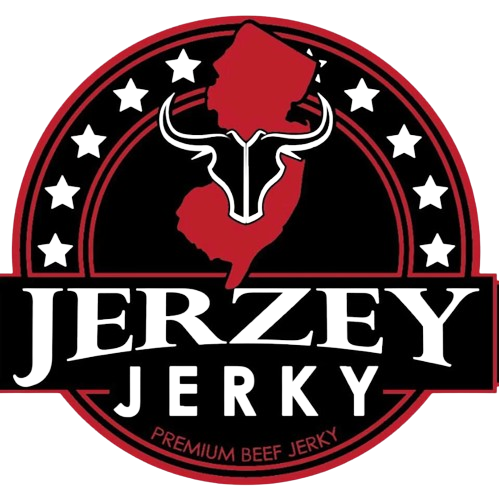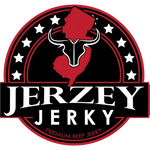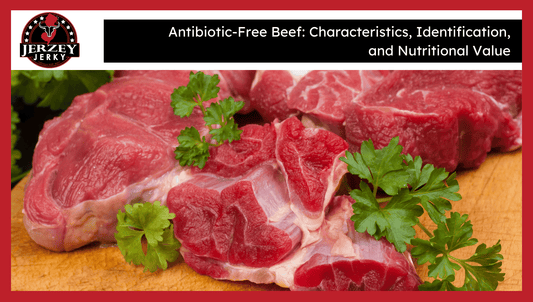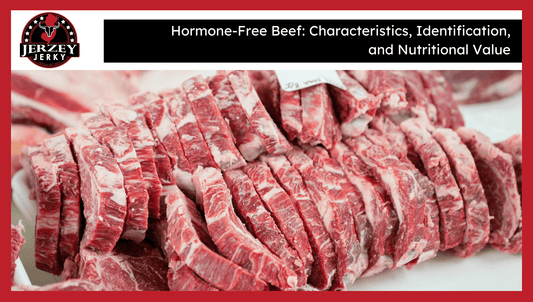
Does Beef Jerky Go Bad?
Beef jerky goes bad because of moisture, oxygen, or bacteria presence. Molded, sour odor or sticky jerky are the signs of spoilage. The presence of faded color is also a sign of quality loss. Safe storage and handling are necessary to avoid spoilage even when meat is dry.
The USDA Meat and Poultry Hotline suggested that sealed jerky at room temperatures below 21 °C lasts up to 12 months. Jerky spoils quickly when subjected to heat or air. Humidity also reduces shelf life by at least 60 percent without refrigeration.
A 2022 study by Kansas State University discovered that water activity values greater than 0.85 of the jerky encourage bacteria. Safe jerky possesses 0.65 to 0.75 aw. The growth of microbes drastically reduces below this level. Drying and packaging must be safe practices to prevent contamination and spoilage.
Never accept jerky that smells bad or has mould growing on it. These are indicators of spoilage.
What Is the Shelf Life of Beef Jerky?
Here are three facts about how long unopened store-bought jerky lasts:
- Unopened dry jerky: It has a shelf life of 1 to 2 years. Vacuum sealing inhibits air. Preservatives avoid spoilage. This packaging retards bacteria and mould. Jerky remains good in dry and cool places. Shelf life stops with exposure to heat, moisture or sunlight and has an influence on texture and taste.
- Opened Jerky: Open packets of jerky keep 3 to 7 days at room temperature. It lasts 1-2 weeks when kept in an airtight container in the fridge. Spoilage begins with air and moisture. Its safety, taste, and texture after opening are extended by proper sealing, refrigeration and dry storage.
- Preservative-free Jerky: Preservative-free Jerky has a shelf life of 1 2 weeks in sealed conditions. It does not use chemicals to prevent spoilage. Freshness is influenced by air and moisture despite good drying. It spoils quicker than preserved ones, particularly when subjected to moisture, heat, or when not closed properly.
What Factors Affect Jerky’s Shelf Life?
Here are the factors that affect Jerry's shelf life:
- Moisture Content: Reduced water increases the usage period. Naturally high moisture provides optimum conditions for bacteria and mold. The jerky lasts longer when it is dry. Additional water in the meat enhances spoilage. The final product moisture balance determines how long the product is safe.
- Storage Conditions: Heat, air, and light decrease the jerky. Bacteria grow more and alter texture due to exposure. Spoilage is retarded by cool, dry, and dark locations. The meat is ruined by direct sunlight and high temperatures. Exposure to air implies quicker decay of freshness and security.
- Preservatives: Chemicals such as nitrates retard microbial growth. These drying agents assist jerky to stay secure more. They inhibit the rapid growth of bacteria. Jerky is easier to spoil without preservatives. Treated meat stays longer in texture, taste, and safety than that of jerky not chemically covered.
- Packaging Method: Black vacuum sealing and nitrogen flushing give jerky a long shelf-life. The techniques eliminate air, reducing the amount of oxygen exposure. Fewer air prevents the spoilage. Moisture and bacteria are prevented by sealed packs. Substandard packaging adds danger. When the jerky is properly sealed, it has a longer and stable shelf life.
- Processing Technique: The right amount of dehydration destroys sufficient water to prevent bacteria. Remaining germs are killed in a heat treatment. These two steps are essential to safety. Low heat or weak drying causes retained moisture that accelerates spoilage. Quality processing enables jerky to remain safe, dry and to have an extended shelf life.
- Handling & Hygiene: Surfaces and clean tools reduce the possibility of contamination. Jerky becomes contaminated with bacteria when the hands or other equipment are dirty. Meat is dried in clean places of preparation. Slicing, drying and marinating hygiene is important. Improper handling introduces germs which reduces the shelf life of the product.
How Should You Store Beef Jerky?
Here are the five ways to store beef jerky:
- Store at Room Temperature: In sealed bags or airtight containers jerky stays fresh 12 to 13 weeks without refrigeration. The exposure to air leads to spoilage. Bacterial growth is prevented by storing the products in dry and shaded places. Freshness deteriorates through heat and moisture. Safe storage is achieved through proper sealing of texture, taste and safety.
- Refrigerate After Opening: Refrigeration allows the opened/homemade jerky to stay fresh longer. Low temperature retards deterioration. Air-tight containers inhibit moisture accumulation. Jerky stored in the fridge is guarded against air and bacteria. The lower temperatures are better for conserving texture.
- Long-Term Frozen: Began or bulk jerking kept in the freezer is safe up to 6 months. Seal moisture using freezer bags. Bacteria are halted by low temperatures. In packs that are airtight, the jerky texture is firm. Freezing helps avoid spoilage and preserves meat without altering its fundamental taste.
- Use Moisture Absorbing: Sealed containers require silica gel packets that absorb any additional moisture. Mold requires low moisture to grow. Such packets help in drying up an environment. With moisture control packs, stored jerky remains safe and dry. Too much water reduces shelf life and creates the possibility of bacteria.
- Beware of Humid Places: Humidity adds wetness to packages and containers. The preservation of jerky in cool, dry areas deters the growth of bacteria. Motive and warm temperatures accelerate mold. Store in dry shelves or drawers without exposure to sunlight in order to retain the jerky quality.
How Can You Tell If Beef Jerky Has Expired?
Here are the ways to check expiry date of beef jerky:
- Smell: Off, sour or rancid odors indicate spoilage. A new specimen is dry, meaty-smelling. Bad jerky usually has a sharp or rancid aroma which is either due to bacteria or rancid fat.
- Texture: Sticky, soft or slimy jerky is an indication of contamination. Good jerky is hard and dry. Bacteria or mould are present in meat which makes it out of bounds for eating due to the wet or greasy texture.
- Color Changes: The presence of white spots, mold growth or fading of color, are sign of spoilage. Fresh Jerky remains dark colored or red. Tears are typically followed by pale skin or uneven skin discoloration when air, moisture, or bacteria begin to decompose the meat.
- Taste: Spoilage is confirmed by a bitter, sour, or strange taste. Safe jerky is also either salty, smoky, or seasoned. A bad or spoiled taste is observed when fats go bad or when there is bacteria on the surface of the meat.
Can You Eat Expired Jerky?
Read an expiration or best-by date on the packaging. The majority of the jerky lasts longer beyond that day when packed properly. It is peak freshness and not automatic spoilage, particularly when stored in cool and dry environments.
Before consuming the jerky, examine it. Without a mold, weird smell, or sticky feel, the jerky usually stays safe. Bad jerky has a sour smell or stickiness. Good condition is seen in clean appearance and dry texture.
Observe the storage recommendations of the manufacturer. Other brands treat jerky longer to have more stability. Preservatives, vacuum sealing and moisture control allow jerky to remain fresh beyond printed dates. Brands tend to advise on recommended storage and approximate safe lifespan with proper handling once the initial package has been opened.

 2025-07-30
2025-07-30
 Wayne Holland
Wayne Holland










